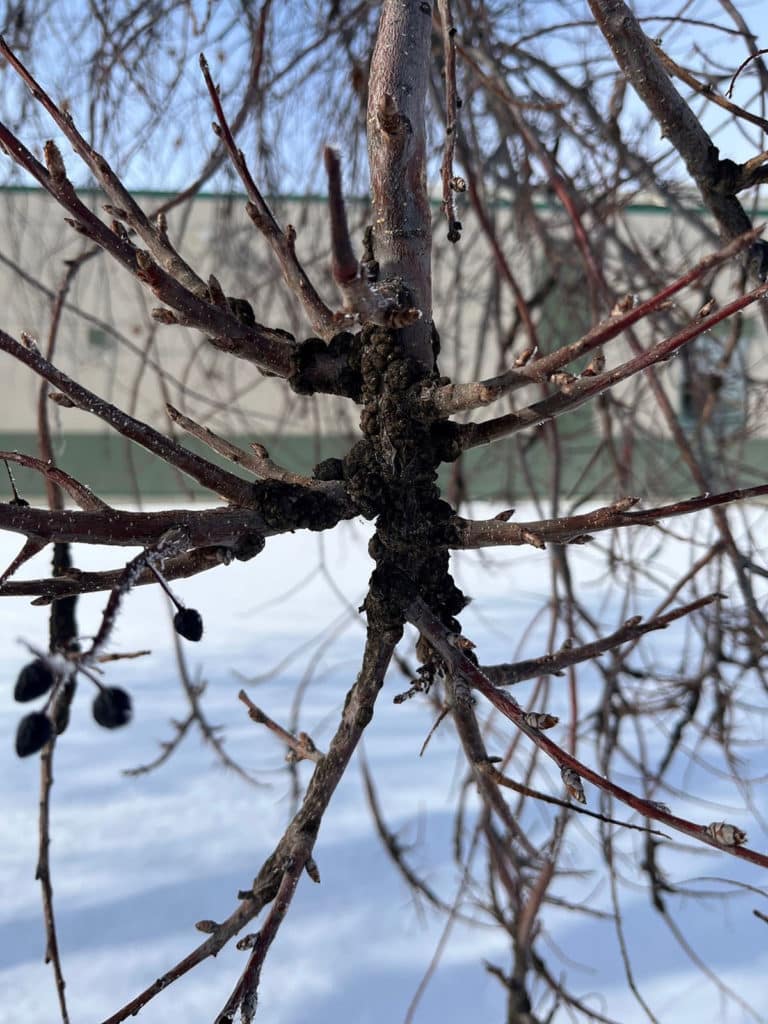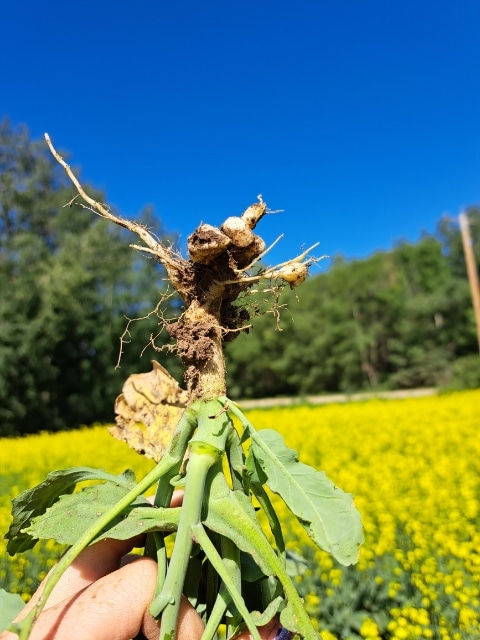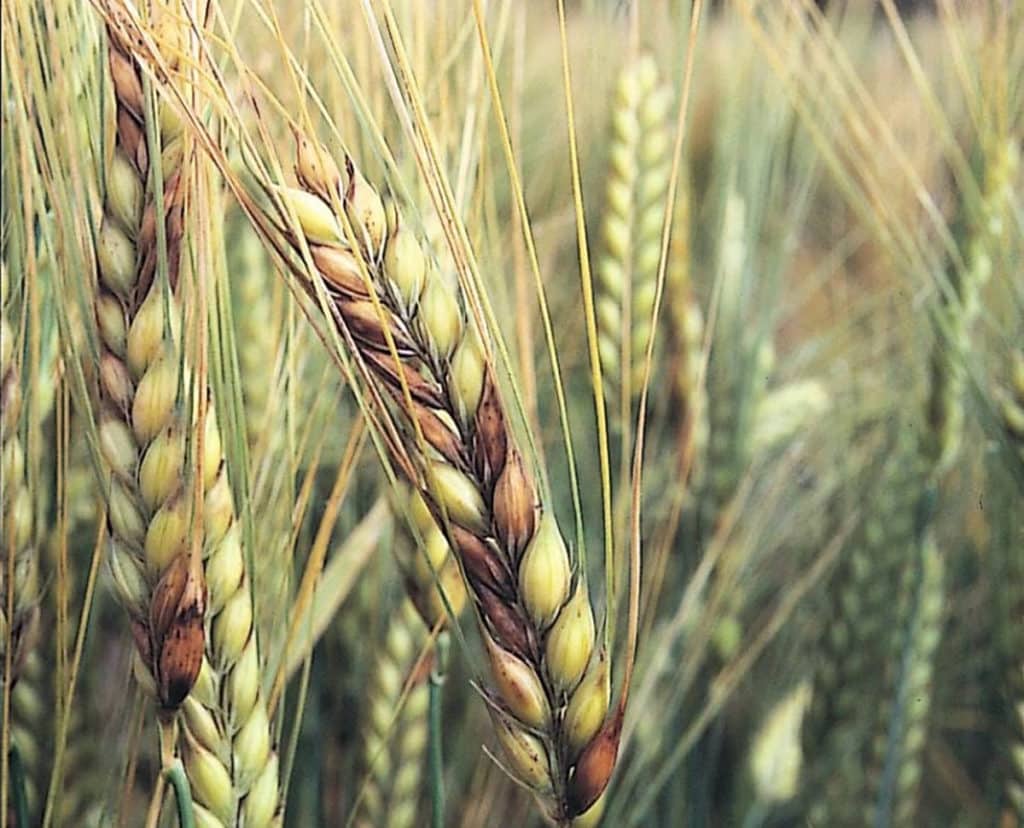In the agricultural and horticultural world, the term pest includes weeds, pathogens, insects, and vertebrates that cause damage to production in one way or another.
Pests cause problems in Alberta every year – economical, environmental, and health and safety. They can reduce yield, make harvesting difficult, cause animals to lose or slow weight gains, make an area unsightly, or all of the above.
There are also regulated pests that we are preventing from entering and establishing within Alberta, eradicating where possible, and attempting to contain. Pests can be placed on this list for many reasons, such as:
- The pathogen has the possibility of causing devastating plant or yield loss, with no cure for the disease after infection occurs.
- A weed that can take over sensitive areas or be poisonous.
- A pest can cross species boundaries and infect people or other animals.
The Agricultural Pests Act and Pest and Nuisance Control Regulation are in place to manage, control, and eradicate various pests and nuisances in the province of Alberta.
If you visit the Government of Alberta’s website Crop diseases, you can see all of the regulated and nuisance pests. They also have information on provincially regulated weeds.
Avian Influenza
March 2023 Update
Risk levels for Highly Pathogenic Avian Influenza (HPAI) have increased and new cases are expected as migratory birds make their way back home to Alberta or fly through.
Information on Avian Influenza for Small Flock Poultry Keepers – March 20, 2023.
HPAI is not a food safety concern. There is no evidence to suggest that eating cooked poultry or eggs could transmit HPAI to humans. HPAI is a reportable disease and those who suspect or confirm a case in their flock must immediately report it to the Canadian Food Inspection Agency (CFIA).
Small Flock poultry keepers are encouraged to ensure their Premise Identification Information is up to date with CFIA so that they receive timely updates and information directly. Producers can log in here to access their information: Premises Identification
Background
Avian influenza has been detected in flocks of birds in Alberta including here Sturgeon County. Below you’ll find resources on detecting, reporting, and controlling Avian Influenza. Avian influenza, also known as “avian flu” or “bird flu” is a contagious viral disease affecting respiratory, digestive, and nervous systems of bird populations. More information about avian flu can be found on the Government of Alberta –Influenza web page.
Symptoms in Birds
These clinical signs can vary in appearance and differ in degree of severity between birds. It is better to be cautious and report any birds in your flock that may show signs of the Avian Influenza, early detection can help minimize the spread of the virus. Some common symptoms include:
- loss of appetite and/ or depression
- sudden drop in egg production, with many of the eggs soft-shelled
- purplish-blue colouring of wattles and combs, with blisters on the combs
- coughing, sneezing
- diarrhea
- lack of co-ordination such as inability to stand or walk
- a few deaths over several days in the flock
Precautions
- Prevent contact between wild and domestic birds
- Treat dugout or ponds to kill the virus and lower the risk of infection from domestic and wild bird interaction
- Limit access to poultry, separate dedicated footwear and outerwear for poultry areas
- Clean and disinfect equipment before use
How to Report
All suspected cases must be reported to the Office of the Chief Provincial Veterinarian within 24 hours. If you suspect or confirm a case in your flock, or domestic poultry you must report it both federally and provincially:
- Federal: the Canadian Food Inspection Agency (CFIA) – 403-338-5225 / Email
- Provincial: Office of the Chief Provincial Veterinarian.
If you have concerns about sick or dead wild birds, please call 310-0000 or your local Fish and Wildlife Office.
Prussian carp
Prussian carp have been found in the pond at Cardiff Park. This non-native fish species disrupts aquatic ecosystems and can harm the local fish populations.
- You can fish for Prussian carp in the Cardiff Park pond.
- You must have a sportfishing licence.
- No daily catch, possession or size limits apply to Prussian carp.
- Remember: catch it, kill it. Dispose of dead Prussian carp properly. Possession and transportation of live Prussian carp is illegal.
- Never use Prussian carp as bait, dead or alive.
For more information about the management and identification of Prussian carp visit the Alberta aquatic invasive species website.
Black knot
Black Knot, caused by the fungus Apiosporina morbosa, is a very common disease of trees and shrubs. This disease reduces the aesthetic value of affected specimens, as infections spread rapidly high levels may result in the eventual death of the plant.
As the name implies, black knot looks like a big, black knot on the branches of trees. It begins as a small, dark green swelling, and it matures into the classic, hard, black gall which produces the spores for future infections.
See if your plants are at risk of black knot infection and for greater detail on the disease.

Dutch Elm Disease (DED)
Alberta has the largest DED-free stand of American elm in the world.
A province-wide 2017 American elm inventory identified at least 600,000 elms growing in Alberta municipalities, rural properties, shelterbelts and provincial parks, valued at over $2 Billion dollars, plus an estimated $50-60 million in annual sales, and their value as a shade tree and environmental protection.
Dutch elm disease (DED) is a costly, deadly disease that affects all species of elm trees in Alberta. It is caused by a fungus that clogs the elm tree’s water-conducting system, causing the tree to die. The fungus is primarily spread from one elm tree to another by three beetle species. The beetles are attracted to weak and dying trees, which serve as breeding sites. Once the beetles have pupated and turned into adults, they fly to healthy elms to feed, transporting the fungus on their bodies from one tree to the next. The two key symptoms include:
- flagging (leaves turn yellow and brown, but stay on the tree
- stained sapwood (the wood under the bark is cream coloured when healthy, vs. streaked with dark brown or red when infected
Clubroot
Clubroot is a soil-borne disease of canola caused by the pathogen Plasmodiophora brassica. This disease affects plants in the Brassica or mustard family, including canola, yellow mustard, cabbage, and stinkweed. The pathogen enters root hairs, infects neighboring root cells, causing the swelling or clubbing of the roots as spores are produced. Then when the plant dies or is harvested, the root rots and releases the spores back into the soil. They remain in their resting phase in the soil until the growth of plants in the spring activates them, and they infect new roots.
How to Prevent Clubroot
The most valuable control method a producer has is an extended crop rotation, where canola is grown with at least a three-year break between each crop, and using resistant genetics. For more information on clubroot management, genetics, and how resistance forms, you can watch this video.
Clean your equipment between fields. It can be difficult to get machinery entirely clean, however, removing visible dirt and debris will greatly reduce the risk of contamination.

Fusarium head blight (FHB)
Fusarium head blight (FHB) is a fungal disease of cereals, like wheat and barley. FHB affects kernel development, reducing yield and grade, and may contaminate grain with a fungal toxin (mycotoxin) produced in infected seeds.
